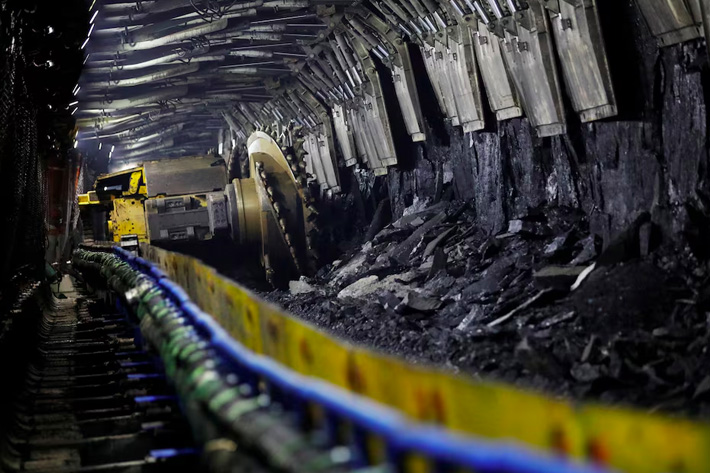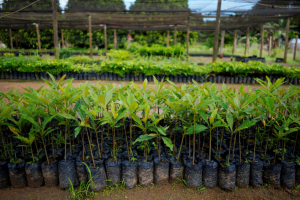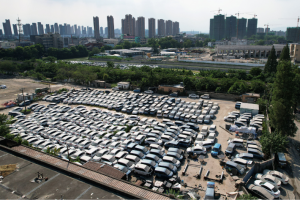A growing number of experts believe the world’s largest emitter of greenhouse gases (GHGs), China, may have hit peak emissions — or will do so by next year, according to a report released this month.
According to climate think-tank Centre for Research on Energy and Clean Air (CREA), 44% of climate and energy experts it surveyed believed China’s “emissions already peaked or will peak before 2025.”
That was much higher than a 15% consensus in 2022 around emissions peaking before 2025, CREA said.
Also on AF: Indonesia’s Prabowo Vows to Close Coal Plants in 15 Years
The results of the survey were part of a larger report CREA published this month on China’s climate transition outlook for this year.
“China’s emissions trajectory over the next few decades will be the single most important factor in the global fight against climate change,” the report noted.
According to the CREA’s projections, China’s carbon emissions will likely remain either flat this year or record only a small increase compared to 2023.
That’s on the back of continued growth in renewable energy, especially solar and wind power generation.
“Even the most bullish analysts didn’t project that [China’s] solar power additions… would expand further after the explosive growth of 2023,” CREA said.
It further noted that “China continued laying the groundwork for carbon peaking and neutrality, both in terms of building up the essential industries and technologies, and with important policy progress.”
Lowering coal dependence key
Much of that progress was rooted in controlling investments in new fossil power generation and in reducing emissions from steel and transportation, it said.
CREA’s findings are in line with multiple recent projections that say China is on track to hit peak emissions well before its 2030 target.
In fact, some experts believe China’s carbon emissions may have peaked last year, considering power-generation from coal hit a record low in May this year. Non-fossil fuel sources accounted for a record 44% of China’s electricity generation in that same period.
China’s power firms are on track to cut coal’s share of annual electricity generation to below 60% for the first time in 2024, according to Reuters.
Climate change, economic goals create uncertainty
Even so, the world’s second-largest economy still needs to navigate major challenges to meet its overall climate goals — the biggest being a booming demand for power.
China’s climate has been swinging between extremes of heat and cold. Record heatwaves this year have led the country’s power demand to grow faster than expected this year.
And, with winter approaching, Chinese authorities have already begun looking to fossil fuels, such as coal and natural gas, to stabilise energy supply.
Meanwhile, Beijing is also looking to shore up economic activity, which has struggled to recover from Covid-19 related shutdowns.
“New economic stimulus measures from the government with no apparent emphasis on emissions has put greater uncertainty over the country’s CO2 emissions trajectory,” CREA noted.
Key target out of reach
Those factors mean China continues to fall behind on its goal to cut its carbon intensity — the amount of emissions per unit of economic growth.
Beijing has previously committed to decreasing its carbon intensity down to 18% in the 2020 to 2025 period. But analysts say it is well behind on this goal, and needs to cut emissions by 6% over 2024-2025 to catch up.
Instead, China’s emissions are on track to inch up by a further 0.4% in 2024, according to CREA calculations.
The new package of economic stimulus measures Beijing launched in September are also likely to spur growth in carbon-intensive sectors, CREA said.
“To align with the Paris Agreement… China will need to either speed up the deployment of clean energy or guide the country’s economic development in a less energy-intensive direction,” the research group said in its report.
Beijing also needs to increase investment in energy efficiency in various industries, particularly in buildings, it added.
It also called for improved monitoring, reporting and controlling greenhouse gas emissions across all sectors.
The most important task for Beijing, however, would be to ensure transparency in climate policies — a test of which would be China’s upcoming nationally determined contributions (NDCs), due to be submitted by February 2025.
Beijing has given “little clarity” on “on China’s emissions pathway… leaving open the possibility of emissions increases until the end of this decade and very slow and gradual emissions reductions afterward,” it noted.
“That would make global climate goals all but impossible to attain.”

- Vishakha Saxena
Also read:
Climate Change Has Cost China $32 Billion in Just One Quarter
Emissions of World’s Super Rich ‘Drive Economic Losses, Deaths’
Energy Emissions Set to Peak But ‘Not in Time’ For Climate Goals
Lacklustre COP29 Deal Shows Strains of Climate Cooperation
What Will Donald Trump Mean For Global Carbon Markets?
Fossil Fuels Set to Drive Global Emissions to a Record, Yet Again
Scientists Say 2024 ‘Virtually Certain’ to be Hottest on Record
Floods or Drought: Climate Change Worsens Global Water Woes
Asian Economies at Risk From Inaction on Climate Change: ADB
























